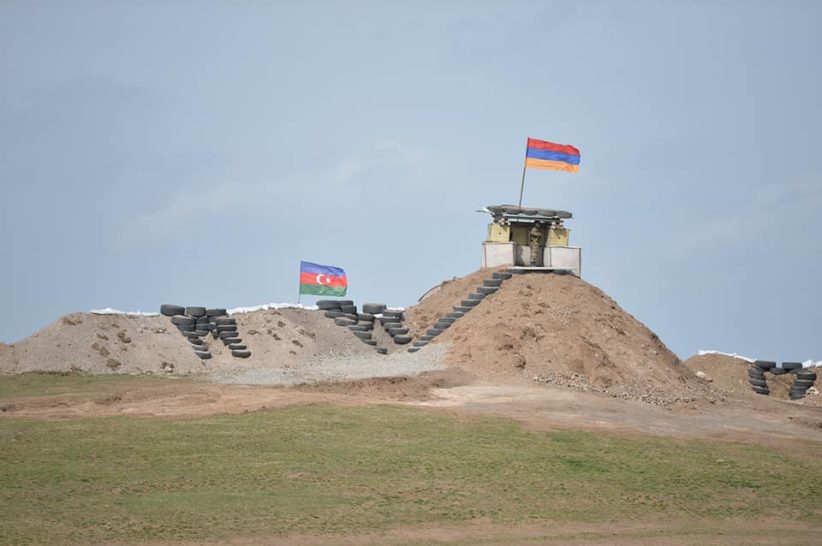Benyamin Poghosyan, Chairman, Center for Political and Economic Strategic Studies
On September 13, Azerbaijan launched a new round of aggression against Armenia, attacking Armenian territories in three different regions: Gegharkunik, Vayots Dzor, and Syunik. The length of the frontline and the quantity of ammunition used by Azerbaijan exceeded the scope of the April 2016 escalation. The hostilities were stopped in the late evening on September 14, leaving more than 200 soldiers and civilians killed or missing on the Armenian side, and Azerbaijani troops occupying new Armenian territories. This latest episode of violence proved the fragility of negotiations between Armenia and Azerbaijan, facilitated by Russia and the European Union. Armenia appealed to Russia, the Collective Security Treaty Organization, and the United Nations Security Council. However, Russia did not intervene militarily. The aggression occurred just 12 days after the latest meeting between Armenian Prime Minister Nikol Pashinyan and Azerbaijani President Ilham Aliyev in Brussels and 13 days after the second meeting of the Armenia-Azerbaijan border delimitation and demarcation commission in Moscow. Given the short time frame, Azerbaijan was probably not satisfied with the results and decided to return to the tools of coercive diplomacy and military blackmail.
Neither Armenia nor Azerbaijan have fully disclosed the details of the negotiations. However, we know they are focused on two main issues: first, a peace agreement between Armenia and Azerbaijan, including the future of Nagorno-Karabakh, and second, the so-called “Zangezur corridor.”
Azerbaijan has a clear vision that any peace agreement should not mention Nagorno-Karabakh at all, arguing there is no territorial or administrative unit called “Nagorno-Karabakh.” Armenians living in Azerbaijan will have neither any status nor any privileges. Azerbaijan also demands that Armenia open the Zangezur corridor, which would allow Baku to pass via Armenia to Nakhichevan, bypassing Armenian border and passport controls. Azerbaijan also claims that it will not negotiate for another 26 years, referring to the time elapsed between the first and second Karabakh wars. Either Armenia accepts Azerbaijan’s demands and signs the relevant documents, or Azerbaijan will continue its attacks against Armenia and may use force to open the Zangezur corridor.
The Armenian position is less clear. During his speeches at the Armenian parliament on September 14 and at the UN General Assembly on September 22, Pashinyan stated that Armenia is ready to sign a peace agreement with Azerbaijan, provided that Azerbaijan recognizes the territorial integrity of Armenia within its internationally recognized borders, that is, with an area of 29,800 square kilometers. Notably, Pashinyan said nothing about the status of Nagorno-Karabakh or its right to self-determination. He said only that one of the crucial factors for regional stability is a comprehensive settlement to the Nagorno-Karabakh conflict that would address and guarantee the rights and the security of the Armenians living there. He also called for UN humanitarian agencies to have secure and unhindered access to Nagorno-Karabakh to assess the humanitarian and human rights situation there and ensure the protection of cultural heritage on the ground.
Meanwhile, Pashinyan rejected the possibility of providing a corridor to Azerbaijan via Armenia. After speaking at the UN, Pashinyan traveled to France and met with President Emmanuel Macron on September 26. He said it is necessary to sign an Armenia-Azerbaijan peace treaty with mutual recognition of borders as defined in the 1991 agreement that established the Commonwealth of Independent States, according to which the administrative borders between Soviet Armenia and Soviet Azerbaijan became state borders. Speaking about Nagorno-Karabakh, Pashinyan said that any settlement of the conflict must guarantee the rights and security of Nagorno-Karabakh’s Armenians, but once again, he did not mention either Nagorno-Karabakh’s status or its people’s right to self-determination.
On September 27 Armenian Defense Minister Suren Papikyan visited France and met with his French counterpart, who stated that France’s Defense Ministry would soon send a delegation to Armenia to assess the situation. On the same day, a meeting was held in Washington between Armen Grigoryan, the head of Armenia’s Security Council, and Hikmet Hajiyev, a top foreign policy advisor to Aliyev. U.S. National Security Advisor Jake Sullivan, who facilitated this meeting, later tweeted that the two officials discussed the importance of preventing further violence and pursuing time-bound and focused negotiations, and also identified concrete steps to support a stable and lasting peace.
On September 22, the former presidents of Armenia and Nagorno-Karabakh met on the invitation of Catholicos Karekin II to discuss the situation in the country. On September 26, the first president of Armenia, Levon Ter-Petrossian, speaking on Armenian public TV, said that Armenia needed to make painful decisions and sign agreements with Azerbaijan and Turkey. He accepted that these moves were equivalent to capitulation but warned that other options would be even more catastrophic for Armenia.
Behind-the-scenes diplomatic efforts are underway to reach a breakthrough in Armenia-Azerbaijan peace negotiations. Publicly available information indicates that Armenia is ready to sign a peace agreement with Azerbaijan that would not mention Nagorno-Karabakh at all. Armenia will thus accept that the Karabakh issue is exclusively a problem of securing the rights of the Armenian ethnic minority living in Azerbaijan, meaning Armenia will not concern itself with Nagorno-Karabakh’s status. Meanwhile, Armenia requires viable long-term guarantees from external players so that, after signing an agreement, Azerbaijan will drop its claims to the Zangezur corridor, withdraw its forces from occupied Armenian territories, refrain from further attacks, and abandon its strategy of military pressure.
















